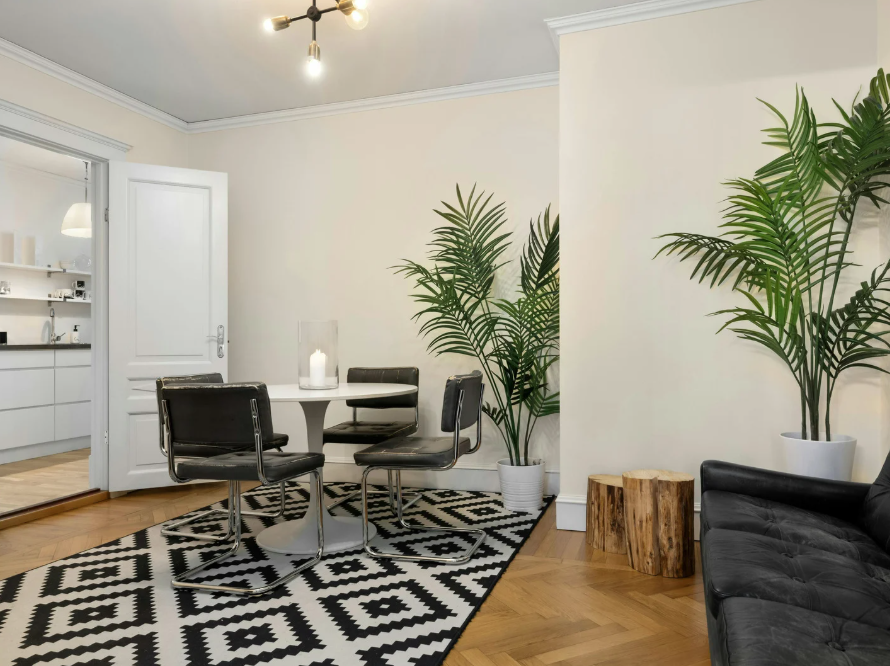Silk rugs stand at the top of home decor that is luxurious and combine traditional craftsmanship and unmatched style. Their shimmering sheen, soft texture along with intricate design, make them desirable furniture pieces in homes with sophisticated design. But, the characteristics which make silk carpets attractive — their soft fibers and natural roots–also are susceptible to being damaged by sun, wear and tear and poor care.
In contrast to their synthetic or wool counterparts, silk rugs require specific protection techniques to maintain their value and beauty as they age. Silk carpets that are well maintained will last for generations and become an important family treasured heirloom. However, if it is neglected or not given proper maintenance can rapidly diminish its appearance and drastically decrease the value of it.
This complete guide will provide you with high-end silk rug protection strategies that are used by experts in luxury rug design along with interior designer. If you own a handmade masterpiece made from traditional weaver, or are considering buying one, these techniques will help you protect your investment in textiles.
Understanding Your Silk Carpet’s Unique Needs
Before tackling ways to protect yourself, it’s important to know the distinction between silk rugs from other flooring. Silk rugs made from pure silk are constructed with natural protein fibers made by silkworms, which makes them exceptionally fine and beautiful. They are much thinner than wool, giving the characteristic soft feel and sparkling shine that catches light gorgeously.
Silk-blend rugs that blend textiles made of wool, silk or similar substances provide a little more durability but still retain a large portion of the silk’s beauty. Pure silk pieces require most cautious handling, while blends are able to withstand some more robust cleaning methods. Knowing the composition of your rug is crucial to determine the best care method.
Silk’s natural properties makes it particularly prone to heat, moisture in addition to UV radiation. Contrary to synthetic fibers silk is susceptible to losing its strength when exposed severe chemicals or excessive moisture. This is why standard products and techniques for cleaning carpets are often too harsh for protection of silk carpets.
Strategic Placement for Maximum Protection
The position of the silk carpet plays a crucial part in the longevity of your rug. Areas with high traffic like hallways, entryways, or rooms for families let silk carpets be exposed to the constant rubbing and dirt accumulation that can cause the premature wearing of fibers and damage to them. You should instead consider placing your silk carpets in formal dining areas, and areas where the amount of foot traffic is at a minimum.
Areas that are susceptible to moisture are another major risk for silk fibers. Do not place silk rugs close to windows that let rain in basements with moisture issues, or close to the cooling and heating vents that cause temperatures that fluctuate. Bathrooms and kitchens should be avoided for silk rug installation due the risk of the exposure of moisture and spills.
Direct sunlight poses one of the biggest risks to silk carpets over the long term. UV rays slowly break down silk fibers, which causes shades to fade and the fabric to break down and become fragile. When choosing a location, select areas that get only a little exposure to direct light throughout the day or make sure you have enough window treatments that filter harmful UV Rays.
Essential Rug Pads and Underlays
High-quality rug pads are the basis of Silk rug safety. They keep the rug from sliding, which helps reduce the strain on silk fibers’ delicate structure when they are used regularly. In addition, the proper padding provides an absorbing layer of cushioning that can absorb impact from walking which significantly reduces wear patterns that may form in time.
For silk rugs, select pads made of the natural rubber, or other felt material. Beware of synthetic rubber pad because they might contain chemicals that may harm silk fibers. It should also be smaller than the rug, generally between one and two inches smaller on all sides, which allows the edges of the rug to lie flat and provide support for the body.
Professional installation ensures optimal protection. The pad should be laid flat, without bubbles or wrinkles that can cause pressure points. The proper installation will also stop the rug from clumping or forming permanent wrinkles that could harm the silk fibers as time passes.
Controlling Dirt and Minimizing Wear
Prevention is the most effective way of protection for silk carpets. By implementing a strict no-shoes policy or only requiring slippers with soft soles can drastically decrease dust and other debris that gets into the silk carpet. Hard-soled shoes act as the sandpaper that is placed on silk fibers, slowly diminishing them with each step.
The strategic placement of premium mats for both outside and inside entrances can trap dirt before it gets to the rug. Pick mats with superior dirt-trapping abilities and keep them frequently to ensure they are functioning effectively.
Regular rotation stops irregular wear patterns from forming. Each three-to four month period, turn the silk rug around 180° in order to spread foot traffic and light exposure equally. This simple method can increase the life of your rug by preventing specific zones from bearing excessive wear.
Immediate Response to Spills and Stains
Rapid action is essential when spills happen in silk carpets. It is important to use gentle blotting, never rub or scratch, which could cause damage to carpet fibers that are delicate and cause the stain to sink deeper in the carpet. Clean, white towels or cloths to absorb the most liquid you can as quickly as possible.
Avoid the use of harsh chemicals, bleach-based products or the standard cleaners for carpets on silk carpets. These products may cause permanent discoloration and fiber damage. Use pH neutral cleaning products specifically formulated for silk fabrics, and make sure to test any cleaning products using a small area to test it first.
Fabric protectors designed for silk rugs are still controversial with experts. Although some claim to provide a protective shield from spills and stains, these can alter the appearance and texture that silk fibres have. Speak with a professional silk rug expert prior to applying any of the protective products to determine whether they’re appropriate for your particular piece.
Defending Against UV Damage
The sun’s damage is gradual and is easy to ignore until noticeable fade has taken place. UV radiation degrades the structure and molecular makeup of silk fibres leading to their loss of energy and vibrancy. The damage is irreparable so prevention is essential.
Window treatments are the first option to protect to UV damage. Install high-quality curtains, blinds or UV-filtering window film to cut down on the amount direct sunlight that hits the silk carpet. Indirect sunlight may damage your rug over time, so constant security is vital.
Be aware of the seasonal shift in sunlight when you place your rug. The areas that are shaded in winter may be exposed to direct sunlight in summer because of the angle of the sun. An annual inspection of the sun’s exposure to your rug throughout the year can help to identify any potential problems prior to any damage taking place.
Daily and Weekly Maintenance Routines
Gentle vacuuming is the basis of maintaining silk rugs However, technique is crucially important. Choose a vacuum that is adjustable in suction and turn off the brush roll. This could pull and catch silk fibers. Instead, you can use the hose attachment along with an upholstery brush to clean your furniture with a gentle.
The weekly maintenance should include the light dusting of the pile and an examination for any emerging issues. Make use of a soft, clean brush that gently raises the pile up and take off dust from the surface. This helps to identify any potential issues, such as loose threads or tiny stains that need immediate attention.
If spot-cleaning is required begin by working from the outside of the stain towards the center of the stain to stop it from spreading. Utilize only a small amount of moisture and allow the surface to air dry completely before walking across it. Avoid using heat sources such as hair dryers for speedier drying since heat may damage silk fibers.
Professional Deep Cleaning Services
Even with the best care for them silk carpets require professional cleaning to preserve their beauty and quality. Contrary to wool carpets that may endure regular maintenance, carpets made of silk usually require professional attention at intervals of 12 – 18 months based on the use and the environmental conditions.
Finding the right professional can make an enormous difference. Choose a specialist who will highlight their expertise in silk rugs and are able to provide recommendations from other owners. Beware of general carpet cleaning companies which may not be able to comprehend silk’s specific requirements.
A professional silk rug specialist will examine the condition of your rug and identify any areas of concern and apply specific cleaning techniques designed specifically for silk’s delicate fibers. They can also offer guidance regarding ongoing care and notify you of any issues that require attention in between professional cleanings.
Proper Storage Techniques
When it comes to storage of silk rugs, cleanliness is essential. Any oil, dirt or stains put on the carpet could draw in insects and cause irreparable damage while storage. Get your rug professionally cleaned prior to long storage times.
Don’t fold silk rugs because creases may be permanent and cause damage to the fibers. Instead, wrap the rug in a long tube and then turn the pile toward the back. Cover the rug in soft cotton fabric. Avoid plastic that can hold in moisture and cause mold or mildew issues.
The storage space is a major factor. Pick a dry, cool place with stable temperatures and adequate air circulation. Basements, attics and other places that are prone to humidity or temperature issues are best avoided. Make sure to check on rugs stored to make sure they’re in good shape.
Frequently Asked Questions
How often should I professionally clean my silk rug?
Professional cleaning every 12-18 months is typically sufficient for silk rugs in normal residential use. Higher traffic areas may require more frequent attention.
Can I vacuum my silk rug myself, or is professional cleaning required?
Regular gentle vacuuming is safe and recommended. Use the hose attachment without the brush roll, and maintain low suction settings to avoid damaging delicate fibers.
What are the best rug pads to use with silk rugs?
Natural rubber or felt pads work best with silk rugs. Avoid synthetic rubber pads that may contain chemicals harmful to silk fibers.
How can I protect my silk rug from sun damage?
Use UV-filtering window treatments, avoid direct sunlight placement, and rotate your rug regularly to ensure even light exposure.
What should I do if my silk rug gets stained?
Blot immediately with clean, white cloths. Use only pH-neutral cleaners designed for silk, and test any product in an inconspicuous area first.
Are silk-blend rugs easier to care for than pure silk rugs?
Yes, silk-blend rugs typically offer more durability while maintaining much of silk’s aesthetic appeal, making them somewhat more forgiving in daily use.
How do I identify a genuine silk rug?
Authentic silk has a distinctive luster and soft feel. The burn test—carefully burning a single fiber—can help identify real silk, which burns slowly and smells like burned hair.
How does humidity affect silk rugs?
High humidity can cause silk fibers to expand and contract, potentially leading to dimensional changes or mold growth. Maintain consistent indoor humidity levels between 30-50%.
Are there eco-friendly cleaning solutions for silk rugs?
Yes, many pH-neutral, plant-based cleaners work well with silk. Always test eco-friendly products in inconspicuous areas before broader use.
Preserving Your Investment for Generations
Silk rugs require a lot of commitment, but the benefits make it worth the effort. Silk rugs are more than just flooring however, they are artistic masterpieces that link us to generations of craft tradition. When taken care of properly an excellent silk rug will become more attractive as it ages, forming an appearance that is a reflection of the journey of your family’s history.
A good investment in silk rug protection will pay dividends both in terms of aesthetic pleasure as well as economic value. Rugs that are properly maintained will increase in value over time, particularly ones made by skilled craftsmen like the ones supported by The Ambiente’s community that includes more than 4,000 weavers. They are handcrafted treasures that require care that recognizes their artistic value and the skilled hands that made them.
Begin to implement these safeguarding strategies today to ensure that your silk rug is able to continue to grace homes with timeless appeal for many years to be. It doesn’t matter if you’re taking care of the treasured heirloom of your childhood or your new investment using these techniques, they will ensure the longevity of your textile investment for the future generations to cherish.





